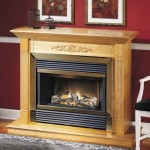How to Decorate a Fireplace Mantel
The fireplace mantel serves as a focal point in many living rooms, offering a substantial opportunity to express personal style and enhance the overall aesthetic of the space. Effective mantel decoration involves careful consideration of various elements, including scale, symmetry, color palette, and the incorporation of meaningful objects. A well-decorated mantel complements the existing décor, adds visual interest, and reflects the homeowner's taste. This article provides a comprehensive guide to decorating a fireplace mantel, covering key principles and practical tips for creating a visually appealing and harmonious display.
Understanding Mantel Architecture and Style
Before embarking on the decoration process, it is crucial to assess the existing mantel architecture and its inherent style. Mantels range from simple, minimalist designs to ornate, traditional structures. The architectural style of the mantel often dictates the appropriate decorative approach. For instance, a sleek, modern mantel benefits from minimalist accents and clean lines, while a rustic, wooden mantel may accommodate more natural elements and textured materials. Understanding the architectural framework allows for decorations that enhance, rather than detract from, the mantel's intrinsic character.
Consider the material of the mantel itself. Is it made of painted wood, stained wood, brick, stone, or some other material? The material informs the color palette and textures that will best complement the existing structure. A brick fireplace, for example, may call for earthy tones and rustic textures, while a painted white mantel offers a versatile backdrop for a wider range of colors and styles. The overall aesthetic of the room should also be considered. Is the room formal or informal, modern or traditional? The mantel decoration should be cohesive with the room's existing style.
The size and shape of the mantel are also important considerations. A long, narrow mantel requires a different decorating approach than a short, wide mantel. Similarly, the height of the mantel relative to the ceiling and the surrounding room can influence the size and scale of the decorative elements. A general rule of thumb is to maintain proportion and balance between the mantel and its decorations. Avoid overcrowding a small mantel with too many items, and conversely, ensure that a large mantel is not under-decorated.
Principles of Composition and Balance
Achieving a visually pleasing mantel display relies heavily on the principles of composition and balance. Symmetry and asymmetry are two fundamental approaches to creating a balanced mantel. Symmetrical arrangements involve mirroring elements on either side of a central point, such as a large mirror or a piece of artwork. This creates a sense of formality and order. Asymmetrical arrangements, on the other hand, use varying sizes and shapes of objects to achieve balance without mirroring. This approach often results in a more relaxed and visually dynamic display.
Layering is another essential technique for adding depth and visual interest to a mantel. Layering involves placing objects in front of each other, creating a sense of dimension. Start with larger, taller items at the back and gradually introduce smaller items in the foreground. This technique helps to prevent a flat or two-dimensional look. Consider using books, picture frames, or decorative boxes to create different levels and add visual texture.
The rule of thirds, a fundamental principle in design, can also be applied to mantel decoration. Divide the mantel into three sections horizontally and vertically and position key elements at the points where these lines intersect. This creates a more balanced and visually appealing composition than simply placing objects randomly across the mantel. Experiment with different arrangements to find the most pleasing composition for the specific mantel and its surroundings.
Color plays a crucial role in creating a harmonious mantel display. Choose a color palette that complements the room's existing décor and the mantel's architecture. Consider using a combination of neutral colors and accent colors to add visual interest without overwhelming the space. The same principles of color theory that apply to interior design in general also apply to mantel decoration. For example, complementary colors (colors opposite each other on the color wheel) can create a striking contrast, while analogous colors (colors that are next to each other on the color wheel) can create a more harmonious and subtle effect.
Selecting and Arranging Decorative Elements
The selection of decorative elements is crucial for creating a mantel display that reflects personal style and enhances the room's aesthetic. Consider incorporating a variety of objects with different textures, shapes, and sizes to add visual interest. Common decorative elements include artwork, mirrors, candles, vases, plants, books, and decorative objects such as sculptures, figurines, and collectibles.
Artwork is a popular choice for mantel decoration. A large piece of art can serve as the focal point of the display, while smaller pieces can be grouped together to create a gallery wall effect. Consider the style and subject matter of the artwork and how it relates to the overall aesthetic of the room. The size of the artwork should be proportional to the size of the mantel and the surrounding wall. A common mistake is to choose artwork that is too small and gets lost on the mantel or too large and overwhelms the space. Leaning artwork against the wall is a popular and casual alternative to hanging it. This allows for easy rearrangement and avoids the need to make holes in the wall.
Mirrors are another effective way to enhance a mantel display. They reflect light and create the illusion of more space, making them particularly useful in smaller rooms. A large mirror placed above the mantel can serve as a focal point, while smaller mirrors can be incorporated into a layered display. The shape and style of the mirror should complement the mantel's architecture and the room's décor. A decorative mirror with an ornate frame can add a touch of elegance, while a simple, minimalist mirror can create a more modern look.
Candles and vases add warmth and ambiance to a mantel display. Candles can be arranged in a variety of ways, such as grouping them together in varying heights or placing them in decorative candle holders. Vases can be filled with flowers, branches, or greenery to add a touch of nature to the space. Consider using a mix of different shapes and sizes of candles and vases to create visual interest. Unscented candles are generally preferred for mantel decoration, as they avoid conflicting with other scents in the room. Choose candles that complement the color palette of the mantel and the room.
Plants and greenery bring life and freshness to a mantel display. Consider using a variety of plants with different textures and colors to add visual interest. Potted plants, succulents, and trailing vines are all popular choices for mantel decoration. If natural light is limited, consider using artificial plants, which can look surprisingly realistic these days. When using real plants, be sure to choose varieties that are appropriate for the light and temperature conditions in the room.
Books can be used to add height and texture to a mantel display. Stack books horizontally or vertically to create different levels and add visual interest. Consider using books with attractive covers or wrapping them in decorative paper to complement the mantel's color palette. Arrange books by color or size to create a more organized and visually appealing display. Books also offer an opportunity to inject some personality and reflect personal interests.
Decorative objects, such as sculptures, figurines, and collectibles, can be used to add personal touches to a mantel display. Choose objects that are meaningful and reflect personal style. Arrange them in groupings or clusters to create visual interest. Consider using objects with different textures and shapes to add depth to the display. Avoid overcrowding the mantel with too many objects, as this can create a cluttered and overwhelming look. Less is often more when it comes to decorative objects.
Seasonal decorations can be incorporated into a mantel display to celebrate holidays and special occasions. Consider adding pumpkins and gourds in the fall, evergreen branches and ornaments in the winter, and flowers and pastel colors in the spring. Seasonal decorations can be a fun and easy way to update the mantel's look throughout the year. However, it's important to ensure that seasonal decorations complement the overall style of the room and don't clash with the existing décor.
Ultimately, the best way to decorate a fireplace mantel is to experiment with different arrangements and find what works best for the specific space and personal style. Don't be afraid to try new things and rearrange elements until a visually pleasing and harmonious display is achieved. The mantel should be a reflection of personal taste and a source of visual enjoyment.

How To Decorate A Mantel Like Pro Easy Styling Tips From Tidbits Twine Home Decor Fireplace Mantle

Mantel Decorating Ideas For Every Month Of The Year Modern Glam

How To Decorate A Fireplace Mantel

Mantel Decorating Tips And Ideas Jaymee Srp

Fireplace Mantel Decor Ideas Three Ways To Style Your

Fall Decor Design Ideas Fireplace Mantel Greenhouse Studio
:max_bytes(150000):strip_icc()/create-a-cozy-fall-fireplace-6a890e0a75a94779be2e6d4ef4784f93.jpg?strip=all)
43 Cozy Ideas For Fireplace Mantels

Mantel Decorating With A Tv 10 Ideas And Tips Nina Hendrick

10 Fireplace Mantel Decorating Ideas Full Service Chimney

30 Top Fireplace Mantel Decor Ideas For Every Interior Displate Blog
Related Posts








